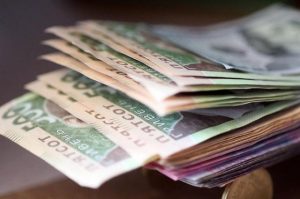
The mobile operator Kyivstar has installed 157 new base stations for the 4G network, connecting another 432 settlements in 17 regions of Ukraine to high-speed mobile Internet using LTE technology.
According to the company’s statement, 326,000 people live in these settlements. In particular, these are Novy Rozdil, Lymna (Lviv region), Dolynska, Nova Praha, Novhorodka (Kirovohrad region), Sribne (Chernihiv region), Zarychanka, Trebukhivtsi (Khmelnytsky region), Katerynka (Mykolaiv region), Sivashske, Novoraisk (Kherson region), Moshny (Cherkasy region), etc.
To expand the territory of the 4G network, Kyivstar will include 157 additional base stations. Of these, 38 have already been launched at GSM-900, 19 at GSM-1800.
Kyivstar continues to develop 4G communications at 1800 MHz, 2600 MHz and 900 MHz and has already connected more than 15,000 settlements to high-speed mobile Internet.

Ukraine in January-June 2020 increased gross natural gas consumption by 1.2% (by 190 million cubic meters) compared to the same period in 2019, to 15.66 billion cubic meters.
According to the quarterly monitoring data of the National Energy and Utilities Regulatory Commission of Ukraine (NEURC), in the second quarter of this year, consumption increased by 17.6% (720 million cubic meters) compared to April-June 2019, to 4.8 billion cubic meters.
The use of natural gas by household consumers (the population) in the first half of 2020 amounted to 4.76 billion cubic meters (6.5% less from January-June 2019), in the second quarter 1.17 billion cubic meters (31.5% more against April-June 2019).
Thus, the share of household consumers in the total structure of gross consumption in the first half of the year amounted to 30.4% against 32.9% in January-June 2019.

Real wages in Ukraine in August 2020 increased by 6% compared to August 2019, and decreased by 2.8% from July 2020, the State Statistics Service has said.
According to the State Statistics Service, the average nominal wages of full-time employees in August 2020 compared to the previous month decreased by 3%, and in annual terms (from August 2019) increased by 8.6%, amounting to UAH 11,446, which is 2.4 times more than the level of the minimum wage (UAH 4,723).
The agency clarifies that in July of this year it was UAH 11,804, in June UAH 11,579, in May UAH 10,542, in April UAH 10,430, in March UAH 11,446, in February UAH 10,847, January some UAH 10,727.
According to the statistics department, the largest increase in the average wage of full-time employees in August 2020 compared to the same month a year earlier was observed in Ternopil (by 14.9%), Mykolaiv (by 13.7%), Kirovohrad (by 13%), Sumy (by 12.4%), Chernihiv (by 12.3%), Chernivtsi (by 12.2%), Ivano-Frankivsk (by 12.1%), Khmelnytsky (by 11.9%) Rivne (by 11.7%), Luhansk (10.2%), and Zhytomyr (10.1%) regions.
The highest level of wages in the past month was observed in Kyiv (UAH 16,795), the lowest one in Chernivtsi region (UAH 8,996).
In August 2020 from August a year earlier, wages in provision of other services rose by 27.3%, in healthcare and social protection by 20.1%, in the field of arts, sports and entertainment by 19.5%, information and telecommunications by 15.1%, in the field of administrative, support services by 14.6%, in education by 11.8%, professional, scientific and technical activities by 10.1%, in agriculture, forestry and fisheries by 8.6%, at industrial enterprises by 7.2%, in real estate operations by 6%, in financial and insurance activities by 5.6%, in construction and in the sphere of wholesale and retail trade by 4.1%, in the field of public administration and defense, compulsory social insurance by 4%, at transport, storage facilities, in postal and courier activities by 2.7%.

President of Ukraine Volodymyr Zelensky believes that current good indicators of trade turnover between Ukraine and China can be significantly increased, and Ukraine will have something to offer China in terms of exporting high-tech products, products with a high degree of processing and high added value.
“Ukraine has significant potential for cooperation with China in various fields, comparable or even greater than that of many other Eastern European countries. We are interested in the successful realization of this potential. China confidently took the first line in the ranking of our largest trading partners: last year our trade turnover amounted to about $13 billion. And China takes leading positions among the main export partners of Ukraine. I am convinced that the current figures can be significantly increased,” he said in an interview with the Chinese news agency Xinhua.
The President of Ukraine said that Ukraine was one of the first countries to support the initiative of the President of the People’s Republic of China Xi Jinping “One Belt, One Road.”
“Ukraine has a unique geographical location – on the eastern border of the EU, on the way from Asia to Europe, as well as between the Black and Baltic Seas. We have the necessary economic and industrial potential for effective participation in this ambitious project,” he said.
Among the priorities of practical cooperation with China, Zelensky named the credit and investment, agro-industrial, engineering and transport sectors. “Ukraine has significant scientific and educational potential, rich culture. All this provides good opportunities for increasing the volume of trade and economic cooperation, enhancing bilateral humanitarian contacts and exchanges,” he said.
Zelensky said that in order to create better conditions for tourism development, Ukraine introduced a temporary visa-free regime for Chinese tourists from August 1.
“We will continue to try to improve the conditions for mutual trips of citizens of the two countries, so that they have better opportunities to get acquainted with the rich history and culture of Ukraine and China,” he said.
In his opinion, one of the steps towards cultural rapprochement between the two peoples should be the systematic training of specialists in Sinology in Ukraine, and now the Chinese language is being studied at Ukrainian secondary schools and universities, in Ukraine about 500 Sinologists annually receive diplomas of philology, there are qualified translators.

Vodafone Ukraine mobile operator has launched LTE-communications (4G) in the 900 MHz band in 128 settlements of Cherkasy region, thus providing high-speed Internet for almost 110,000 people.
According to company’s press service, in particular, the operator has launched 4G coverage in the 900 MHz band in more than 1,700 settlements of Kyiv, Odesa, Vinnytsia, Zhytomyr, Khmelnytsky, Zakarpattia, Ivano-Frankivsk, Lviv, Ternopil, Rivne, Volyn, Chernivtsi and Cherkasy regions, thus giving access to services for more than one million people.
By the end of 2020, the operator plans to launch the LTE network in the 900 MHz band in all regions of Ukraine: in turn from west to east.
As reported, according to the license terms, by mid-2022 the operators should provide mobile high-speed Internet coverage in settlements with population over 2,000 people, covering 90% of the population of Ukraine. 4G coverage for roads of international and national importance is to be provided until the middle of 2024.

Metinvest B.V. (the Netherlands), the parent company of the Metinvest mining and metallurgical group, will buy back all 2021 eurobonds previously issued by the company for $ 115.3 million and part of 2023 eurobonds for $ 193.2 million, according to Metinvest B.V.’s report on the first results of obtaining consent to buy back its eurobonds maturing in 2021 and 2023 and the issue of new eurobonds.
According to the document, there are currently 2021 eurobonds in the amount of $ 115.3 million in circulation, and with amendments and recalculation with a fixed interest rate, $ 118.020 million will be spent on their redemption.
Currently, there are also 2023 eurobonds for a total of $ 504.515 million in circulation, while within the first stage (with the end of acceptance on September 28) applications for the redemption of these bonds for the amount of $ 193.227 million were accepted.
As reported, Metinvest is placing seven-year eurobonds worth $ 333 million with a yield of 7.95%. The demand for eurobonds exceeded $ 1.6 billion.